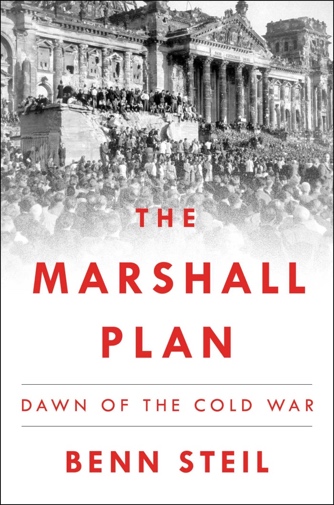At the end of World War II, faced with widespread destruction in Europe, strong communist parties in Greece and France, and the Red Army deployed throughout Eastern Europe and in the eastern zone of Germany, United States Army chief-of-staff, General George C. Marshall Jr., was concerned that, without American aid, key allies would not be able to build strong democracies with thriving market economies. The harsh winter of 1946-47 exacerbated the situation.

Meeting in the Kremlin with Soviet leader Joseph Stalin in April 1947, Marshall gained the impression that Stalin expected Western Europe to fall under his sway as conditions worsened. Marshall was determined to prevent such a scenario and set out to reconstruct Western Europe as a bulwark against communist authoritarianism.
The massive, costly, and ambitious undertaking would confront Europeans and Americans alike with a vision at odds with their history and self-conceptions. In the process, it would drive the creation of the North Atlantic Treaty Organisation (NATO), the European Union, and a Western identity that continues to shape world events.
Focusing on the critical years 1947 to 1949, Steil’s account brings to life the seminal episodes marking the collapse of post-war United States-Soviet relations – the Prague coup, the Berlin blockade, and the division of Germany. In each case, we see and understand like never before Stalin’s determination to crush the Marshall Plan and undermine American power in Europe.
Steil identifies the day the Cold War began: 7 July 1947, when the Soviets cabled their Eastern European allies to forbid them from attending a planning meeting in Paris to discuss aid under the Marshall Plan. Soon afterward, Stalin’s top ideologist, Andrei Zhdanov, announced that the world was divided into “two camps” and that the communist countries of Europe were banding together in a new organisation, the Communist Information Bureau, which was created to solidify Moscow’s control over Eastern Europe in the face of growing United States influence in Western Europe.
Given current echoes of the Cold War, as Putin’s Russia rattles the world order, the tenuous balance-of-power and uncertain order of the late 1940s remains relevant. The Marshall Plan provides critical context into understanding today’s international landscape. Bringing to bear fascinating new material from American, Russian, German, and other European archives, Steil’s account changes how we view the Marshall Plan and the birth of the Cold War.
Drawing extensively on United States archival material as well as some Russian, British, French, German, Serbian and Czech sources, Steil is at his best when describing the myriad agencies and policies that oversaw and executed the Marshall Plan as it distributed more than US$13 billion in aid to 17 countries from 1948 to 1952. He writes elegantly on economics, explaining complicated mechanisms used to fuel the Western European recovery, such as implementation of counterpart funds, the creation of the European Payments Union and the cancellation of German debt.
Steil emphasizes the roles and personalities of leading American statesmen driving the effort to enact the Marshall Plan and devotes considerable space to describing the domestic United States political scene and the “legislative drama” behind the plan’s political passage. The Marshall Plan achieved the goals of its creators, he concludes, and while it played a role in drawing the lines of the Cold War, the conflict itself was inevitable.
Steil ends the book with a distracting discussion of the post-Cold War period and a critique of United States-supported NATO expansion to countries of the former Soviet bloc and the resulting alienation of Russia. Steil’s work might have benefited instead from an analysis of the impact on the legacy of the Marshall Plan from current United States protectionist trade policies and strains within the European Union and in United States-European relations.
Steil is senior fellow and director of international economics at the Council on Foreign Relations. He is the author of the prize-winning Battle of Bretton Woods: John Maynard Keynes, Harry Dexter White, and the Making of a New World Order (Princeton University Press, 2013).
The Marshall Plan includes several black-and-white images embedded in the text; four appendices, one with several poor-quality maps that may have been better placed in the text; a list of references; extensive notes; and a comprehensive index.
It is a polished and masterly history told with verve, insight, and resonance for today. It will interest students of politics, diplomacy, economics and national security. Steil’s new perspective on the Marshall Plan will be appreciated by specialists for its wide-ranging analysis and welcomed by general readers for its engrossing style and accessibility.
Contact Marcus Fielding about this article.






